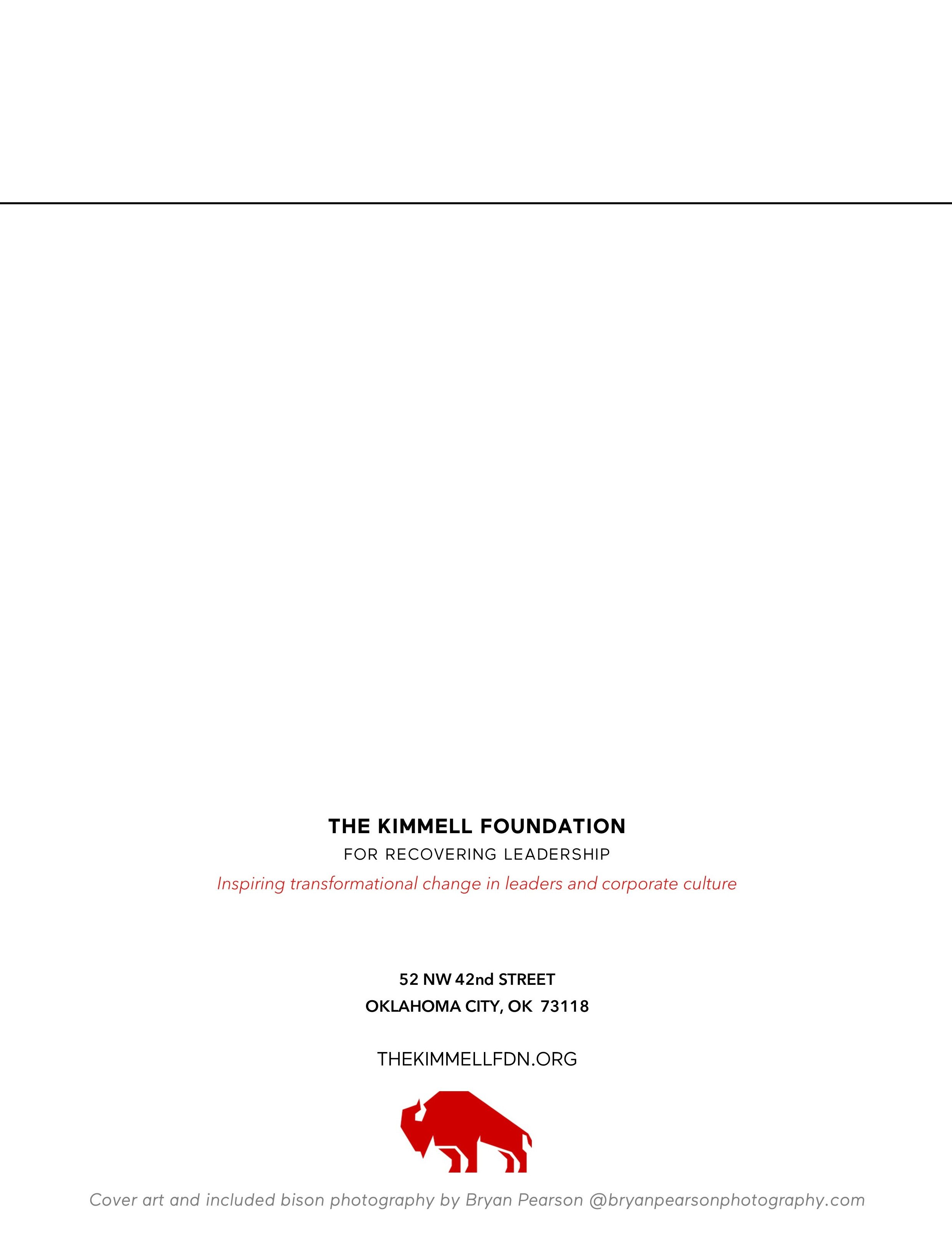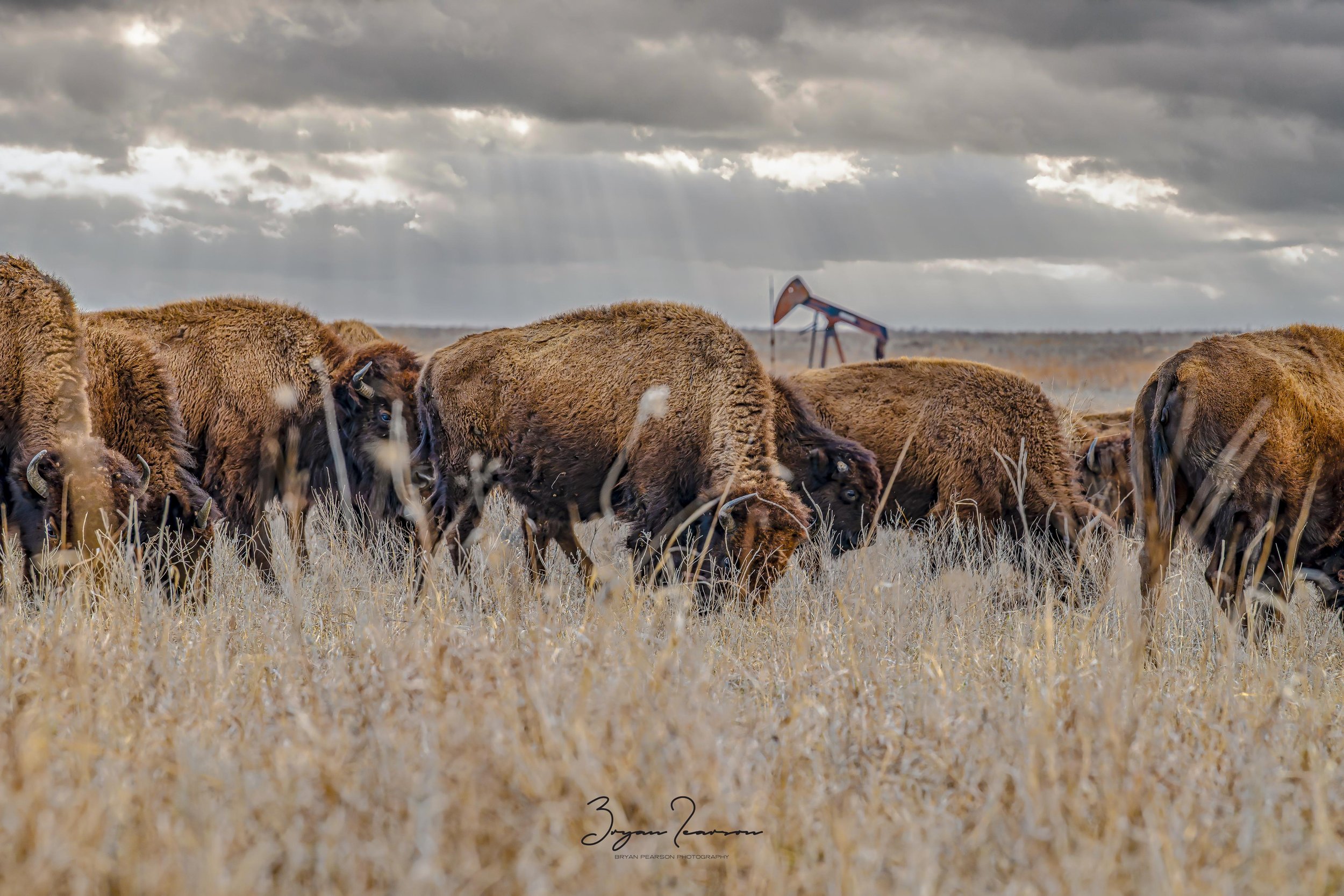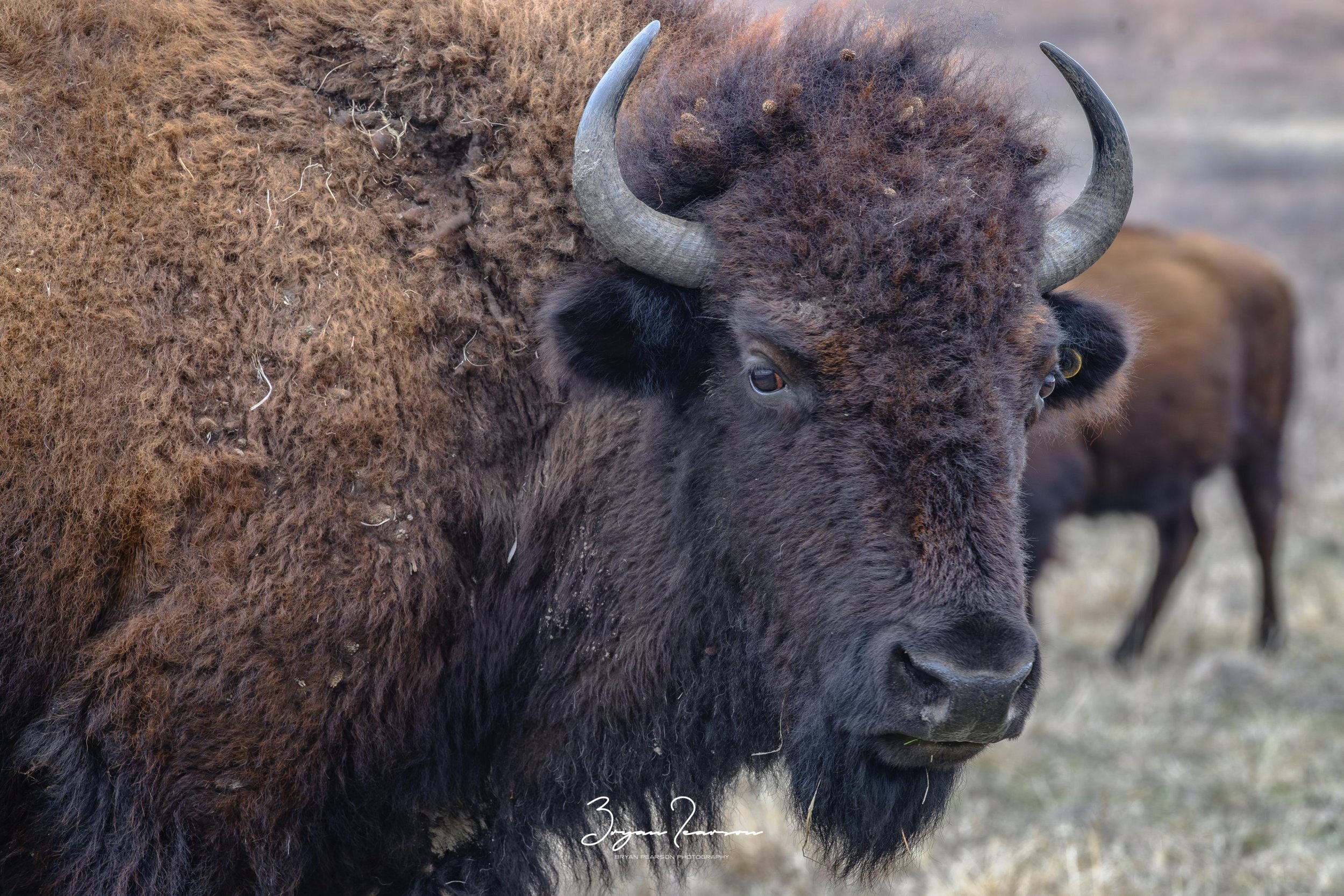
The Project
-
Subject
This project and the subject falls into the area of photography that I have a true passion for - Wildlife. Our subject is the American Bison. Below is a list of 15 facts about bison pulled from the National Parks Service website.
-
Timeline
Most projects have a projected finish or set timeline but this project is a little different. After numerous conversations with The Kimmell Foundation their goal is for this project to be ongoing project with no end date. We will be meeting on a regular basis to discuss the project and what their expectations are.
-
Goal
The goal for the project is to capture images of the American Bison for the use of the Kimmell Foundation in an annual series of notecards and stationary. As I stated in the Timeline section there is no end date set so we will be working on this project until the needs of the Kimmell Foundation have been met. The goal is the bring recognition to one of the greatest mammals that roam North America. The American Bison was selected by the Kimmell Foundation for specific reasons which has been listed below.

15 Facts About Bison
National Parks Service - Bison Facts Link
On May 9, 2016, President Obama signed the National Bison Legacy Act into law, officially making the American bison the national mammal of the United States. This majestic animal joins the ranks of the bald eagle as the official symbol of our country—and much like the eagle, it's one of the greatest conservation success stories of all time.
In prehistoric times, millions of bison roamed North America—from the forests of Alaska and the grasslands of Mexico to Nevada’s Great Basin and the eastern Appalachian Mountains. But by the late 1800s, there were only a few hundred bison left in the United States after European settlers pushed west, reducing the animal’s habitat and hunting the bison to near extinction. Had it not been for a few private individuals working with tribes, states and the Interior Department, the bison would be extinct today.
1. Bison are the largest mammal in North America. Male bison (called bulls) weigh up to 2,000 pounds and stand 6 feet tall, while females (called cows) weigh up to 1,000 pounds and reach a height of 4-5 feet. Bison calves weigh 30–70 pounds at birth.
2. Since the late 19th century, [the Department of the] Interior has been the primary national conservation steward of the bison. Public lands managed by Interior support 17 bison herds—or approximately 10,000 bison—in 12 states, including Alaska.
3. What’s the difference between bison and buffalo? While bison and buffalo are used interchangeably, in North America the scientific name is bison. Actually, it's Bison bison bison (genus: Bison, species: bison, subspecies: bison), but only saying it once is fine. Historians believe that the term "buffalo" grew from the French word for beef, "boeuf."
4.Yellowstone National Park is the only place in the U.S. where bison have continuously lived since prehistoric times. What makes Yellowstone's bison so special is that they're the pure descendants (free of cattle genes) of early bison that roamed our country's grasslands. As of July 2015, Yellowstone's bison population was estimated at 4,900—making it the largest bison population on public lands.
5. What's a "red dog"? It's a baby bison. Bison calves tend to be born from late March through May and are orange-red in color, earning them the nickname "red dogs." After a few months, their hair starts to change to dark brown and their characteristic shoulder hump and horns begin to grow.
6. The history of bison and Native Americans are intertwined. Bison have been integral to tribal culture, providing them with food, clothing, fuel, tools, shelter and spiritual value. Established in 1992, the Inter Tribal Buffalo Council works with the National Park Service to transfer bison from national park lands to tribal lands.
7. You can judge a bison's mood by its tail. When it hangs down and switches naturally, the bison is usually calm. If the tail is standing straight up, watch out! It may be ready to charge. No matter what a bison's tail is doing, remember that they are unpredictable and can charge at any moment. Every year, there are regrettable accidents caused by people getting too close to these massive animals. It's great to love the bison, but love them from a distance.
8. Wind Cave National Park's herd helped revive bison populations around the country. The story starts in 1905 with the formation of the American Bison Society and a breeding program at the New York City Zoo (today, the Bronx Zoo). By 1913, the American Bison Society had enough bison to restore a free-ranging bison herd. Working with Interior, they donated 14 bison to Wind Cave National Park in South Dakota. More than 100 years later, the bison from Wind Cave have helped reestablishing other herds across the United States and most recently in Mexico.
9. Bison may be big, but they're also fast. They can run up to 35 miles per hour. Plus, they're extremely agile. Bison can spin around quickly, jump high fences and are strong swimmers.
10. Pass the salad, please. Bison primarily eat grasses, weeds and leafy plants—typically foraging for 9–11 hours a day. That's where the bison's large protruding shoulder hump comes in handy during the winter. It allows them to swing their heads from side-to-side to clear snow—especially for creating foraging patches.
11. From hunter to conservationist, Teddy Roosevelt helped save bison from extinction. In 1883, Teddy Roosevelt traveled to the Dakota Territory to hunt bison. After spending a few years in the west, Roosevelt returned to New York with a new outlook on life. He paved the way for the conservation movement, and in 1905, formed the American Bison Society with William Hornaday to save the disappearing bison. Today bison live in all 50 states, including Native American lands, wildlife refuges, national parks and private lands.
12. Bison can live up to 20 years old. The average lifespan for a bison is 10–20 years, but some live to be older. Cows begin breeding at the age of 2 and only have one baby at a time. For males, the prime breeding age is 6–10 years.
13. A little dirt won't hurt. Called wallowing, bison roll in the dirt to deter biting flies and help shed fur. Male bison also wallow during mating season to leave behind their scent and display their strength.
14. The American bison's ancestors can be traced to southern Asia thousands of years ago. Bison made their way to America by crossing the ancient land bridge that once connected Asia with North America during the Pliocene Epoch, some 400,000 years ago. These ancient animals were much larger than the iconic bison we love today. Fossil records show that one prehistoric bison, Bison latiforns, had horns measuring 9 feet from tip to tip.
15. Bison are nearsighted—who knew? While bison have poor eyesight, they have excellent senses of smell and hearing. Cows and calves communicate using pig-like grunts, and during mating season, bulls can be heard bellowing across long distances.
The Kimmell Foundation
The Kimmell Foundation Website
The Vision
The Kimmell Foundation believes and promotes a value culture based on the core belief that people are intrinsically valuable and that putting that belief into action will change the culture of your company, your community, and everyone in your sphere of influence.
Our VISION is a world where people know they are valued, where their lives are improved daily in the workplace, where organizations thrive through empowered employees, and where people awaken to the significance of valuing each other and practice this principle in all their affairs.
Our HOPE is a society that lives the width of each day and not merely the length of life.
Our Mascot
We’d like you to meet Redbud, or “Bud” for short.
Bud is an American Bison and the mascot for The Kimmell Foundation for Recovering Leadership. You may be asking, “Why a bison?”
Bison need three things to be content and stay where they are: Food and Water (basic needs stuff), Safety, and Community (they don’t do well alone). Turns out we are a lot like bison that way. We need to have our basic needs met, feel safe in our environment, and we need community. That is why The Kimmell Foundation is building a “herd” of leaders who can help one another create communities where the people we lead are valued and cared for. The herd is a place of safety and community for you.




































